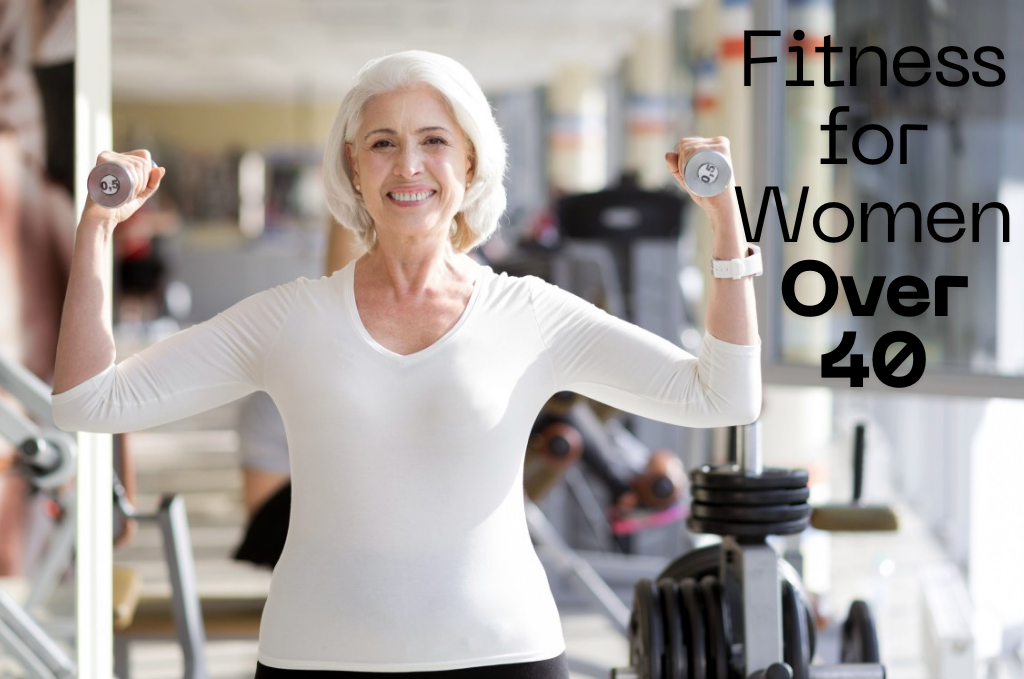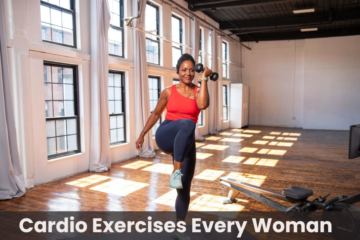Hello people! Could you not remain fit after 40? Find out the best exercise programs for you!
Issues start appearing in women once they hit their 40s. For instance, physical and hormonal changes impact fitness and metabolism. But this phase of life also provides an interesting chance to reclaim health and actual fitness with the proper fitness regime.
Regardless of whether the woman over 40 is interested in weight lifting routines, weight loss programs, or needs energy-boosting workouts, trainer-developed programs are effective in helping women meet their workout goals and improve their quality of life.
Let’s dive in!
Table of Contents
Importance of Exercise for Women over Forty Years of Age

Now, let us discuss what is so critical about fitness for women 40 and older, in general, as we will talk about personalized training shortly. As we age, our bodies naturally go through several changes, such as:
- Decreased Muscle Mass: This means that after 30, women lose 3-8 percent of their muscles for each decade of their years. It results in loss of muscle mass; hence, the metabolism rate is slower, and the strength is lower.
- Hormonal Changes: The perimenopause and menopause phases might partially be attributed to the effects of hormonal changes on energy, fat accumulation locations, and muscle mass. Hormonal changes such as menopause are marked by a decrease in estrogen and progesterone levels, which impact every aspect of the body, including the most basic function of sleeping and the more complex function of bone maintenance.
- Bone Density Loss: Menopause becomes an issue when many women are past middle age and osteoporosis begins, so cardiovascular activities like strength training are important for bones.
- Increased Risk of Chronic Conditions: Heart disorders, diabetes, and other chronic illnesses are common in the elderly, and fitness lowers the probability of these diseases.
Thus, it is crucial for women over 40 to engage in strength, balance, flexibility, and cardiovascular exercise to enable them to embrace fitness as an empowering tool in their lives.
One may think that the recommendation to start with walking is trivial, but walking is the first and most suitable activity for women over 40.
Having explained how viable exercise is for individuals past the age of 40, we can now discuss the forms of exercise and exercise routines that women forty and above should undertake.
Strength Training: Better Muscle and Bone Strength Required

Strength training is a component of every workout that every woman over forty should consider doing. Adults normally undergo progressive muscle mass and strength loss, so we must incorporate some form of weight training.
It enhances strength, the metabolic rate for food utilization, muscle mass, fat-free mass, and mass density.
Benefits of Strength Training for Women Over 40:
- Boosts Metabolism: Another component helpful in commencing the RQ is that muscle tissue, for instance, is more metabolic and, therefore, more useful for energy or calories than fat or adipose tissue while at rest. Therefore, strength training will help avoid achieving such a state when metabolism starts to decline with advancing age.
- Increases Bone Density: Squats, lunges, and deadlifts, among other exercises, place pressure on the bones, and as these grow in number, mammograms minimize the likelihood of osteoporosis.
- Improves Posture and Balance: ‘Basic exercises like building your strength’ are useful in protecting against falls and ensuring that individuals do not stumble in the future, especially when they are old.
Recommended Strength Training Exercises:
- Squats
- Lunges
- Deadlifts
- Push-ups
- Weight training means using free weights, dumbbells, or kettlebell movements (like bicep curls, shoulder presses, etc.).
- Resistance band exercises
- Ideally, strength training should be done 2-3 times a week, accompanied by exercises on all muscle groups.
Cardio: Improving Your Heart Health and Stamina
Aerobic exercise is essential for good heart function and endurance and will also improve the quality of your muscle tissue. Thus, for women aged 40 and above, it will be helpful to come up with a proper cardio workout that could be sustainable and fun.
Regular jogging may have negative effects on the joints. The recommended exercises like walking, swimming, or cycling can, therefore, be as effective as jogging without the extra pressure required.
Benefits of Cardio for Women Over 40:
- Improves Heart Health: Aerobic activity enhances the health of the heart and blood circulation, and so minimizes a man’s probability of acquiring heart illnesses.
- Enhances Mood and Energy Levels: Current research indicates that Cardio has the positive effect of releasing endorphins that enhance mood and energy.
- Burns Calories and Supports Weight Loss: Moving the heart rate constantly assists in burning calories and fats within the human system, hence weight loss.
Recommended Cardio Workouts:
- Brisk walking, the recommendation for which is to complete 30 minutes daily.
- Cycling (indoors or outdoors)
- Swimming or water aerobics
- Moderate-intensity exercises like 30-45 minutes of step aerobics or dance.
- Hiking on moderate terrain
- Weekly exercise: The WHO suggests doing aerobic exercises for at least 150 minutes a week.
Flexibility and Mobility
Some of the signs of aging involve loose motions, muscles, and joints that may feel aches or have limited mobility. Stretching or even a yoga session is good for this because it increases the range of motion, alleviates some of the tension within the muscles, and assists with recovery or any exercise.
Benefits of Flexibility Training:
- Increases Range of Motion: Stretching enables one to overcome flexibility and, in the process, reduces stiffness and the incidence of injury.
- Improves Posture: The preliminary results also correlate with the fact that most women bear children after the age of 40 or have postural incongruity due to muscle spasms involving the limbo region. Flexibility exercises solve the problems discussed above.
- Promotes Relaxation and Reduces Stress: It outlined that yoga and stretching are some of the right actions that can assist in reducing undue stress and enhancing sleep.
Recommended Flexibility Exercises:
- Flexibility (stretching) Exercise: Yoga or Pilates (emphasizing stretching and strengthening).
- Before workouts: Leg swings gentle kicking of the legs in various directions with the knees slightly bent; arm circles: large clockwise and anticlockwise motions with hands several inches apart.
- Post workouts stretches (this includes stretches like the hamstring stretches and hip flexor stretches)
- You should perform flexibility training at least two or three times per week in a week’s schedule, although more often, it may be done depending on the individual or for those who may have time.
Balance and Stability: Falls and Better Coordination
In view of this, balance becomes highly significant with age. The CDC also says that every older adult falls once a year, and the consequences can be severe.
It is demonstrated that incorporating balance exercises in your training activities will substantially lower this risk.
Benefits of Balance Training:
- Prevents Falls: More importantly, more exercises are done to improve balance and coordination since elderly people are easily likely to fall.
- Improves Functional Fitness: Strengthening exercises act on the abdomen and the lower back muscles and assist to keep body stability in the course of exercising.
- Enhances Posture and Core Strength: Many balance exercises under this category also help to develop the abdomens and back muscles associated with posture.
Recommended Balance Exercises:
- Standing on one leg
- Heel-to-toe walk
- Stability ball exercises
- Balance board exercises
- Tai chi or dance classes
The following video explains about Balance and Stability:
Exercise Training for Middle-Aged Women
A Practical Directory for Launching an Exercise for Lifestyle Program Correct exercise is crucial, as is choosing the right routine that is easily executable daily.
Here are some tips to help you stay consistent and motivated as you pursue your fitness goals:
- Set Realistic Goals: When you subdivide your long-term goals into specific targets, you’re intervening on your fitness path. Whether it’s muscle gain, running the 5k, or any asana in yoga, estimation is crucial in maintaining consistency.
- Listen to Your Body: If you’re sleepy or your muscles are sore and achy, rest is crucial, or switch shifts. Awareness of your body is good so you do not overwork your muscles during the exercises, causing strain.
- Find Activities You Enjoy: By doing so, you’ll find yourself sticking to your workout plan since you love the exercises being done on you. For instance, you could decide to dance, hike, or swim.
- Mix Up Your Workouts: Ideally, stay with a pattern for a while because it gets boring, and your body is liable to seize. Add strength training, stretching, and balancing exercises to your aerobic exercise plan to help make it more vigorous and diversified.
- Prioritize Recovery: Recall that the workout is merely one half of the fight, while the other half is a time intended for rest and relaxation. Get proper sleep, drink water during workouts, and practice proper Nutrition to support physical exercise. Your body will thank you for it.
Some Statistics to Support Your Fitness Endeavors
- Muscle Mass Decline: Muscle mass decreases by 3 to 8% per decade after age 30. Thus, as discussed in The American Journal of Clinical Nutrition, strength training would be advisable.
- Osteoporosis Statistics: The National Osteoporosis Foundation states that one out of two women over fifty will break a bone due to osteoporosis, so weight-bearing and resistance exercise are vital.
- Cardiovascular Health: Statistics released by the American Heart Association: Cardiovascular disease kills women in America; physical activity reduces the risk by 30-40 percent.
Conclusion
Women over forty must be fit for forty, which does not come; it is the strength, energy, and health to enjoy the lives women want. According to strength training, cardio, flexibility, and balance, women can retain muscle mass and heart health, reduce injuries, and enhance overall well-being.
The only significant factor is that you want to identify a schedule you can live by and adhere to. Just note that it is possible to start at any time; thus, you may still have many good years in your fitness program.
Therefore, whether you are an absolute beginner or a regular exercise fan, you should never hesitate to start a new journey toward overall wellness now and help women over 40 experience the change that comes with the right workout routines.
FAQ
1. Why is strength training for women above the a?
Strength training does not allow muscles to atrophy, elevates metabolism and promotes healthy bones.
2. How many days a week should women over 40 exercise for the best results?
Ideally, 150 minutes of moderate-intensity aerobic physical activity throughout the week is encouraged.
3. Do exercise activities such as cardio shift belly fat, considering one is above 40?
Yes, cardio uses up calories and promotes fat loss, as well as supporting an increase in strength when done properly.
4. Specific bone fitness training after reaching the age of forty.
Aerobic exercises that put some weight on our bones, such as sit-ups, squats, and lunges, will strengthen the skeletal system.
5. How should I regain lost flexibility and mobility after 40?
Do yoga and Pilates exercises that involve stretching at least three times a week.




